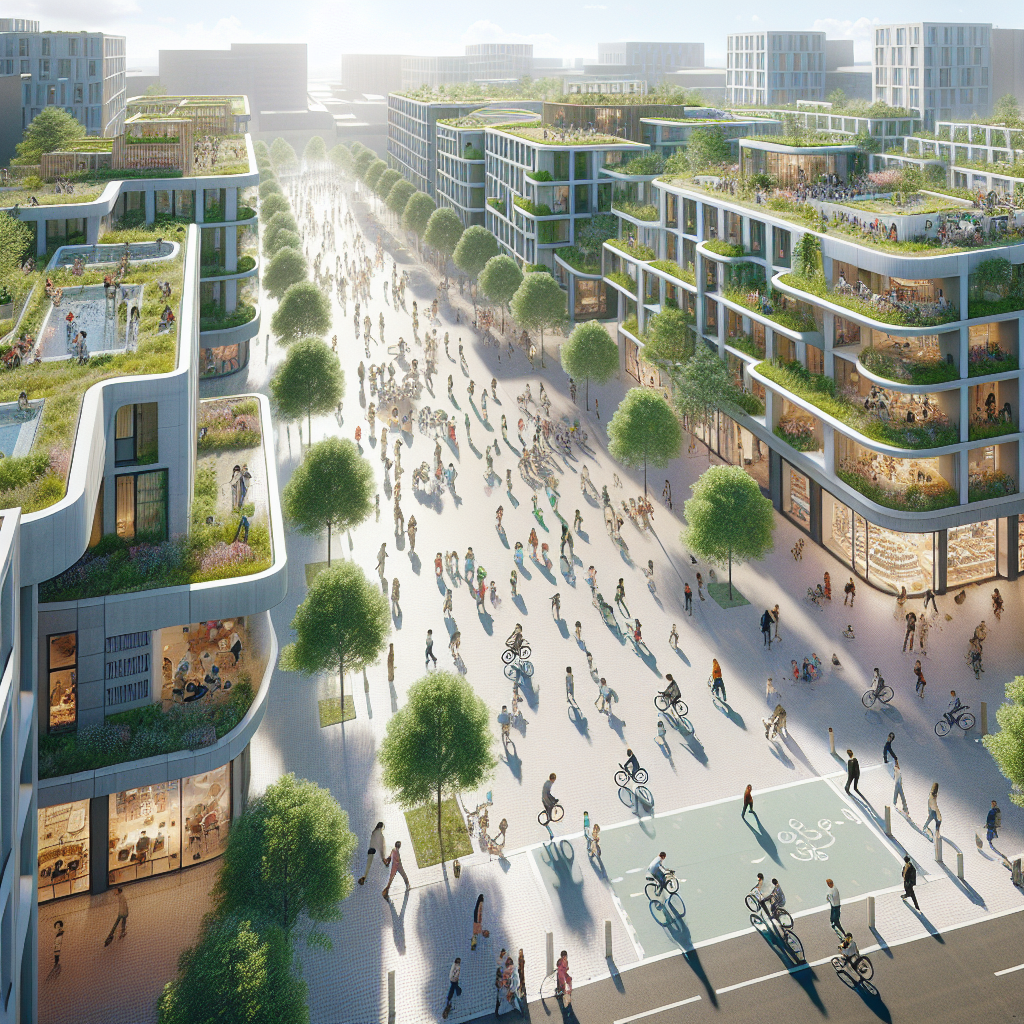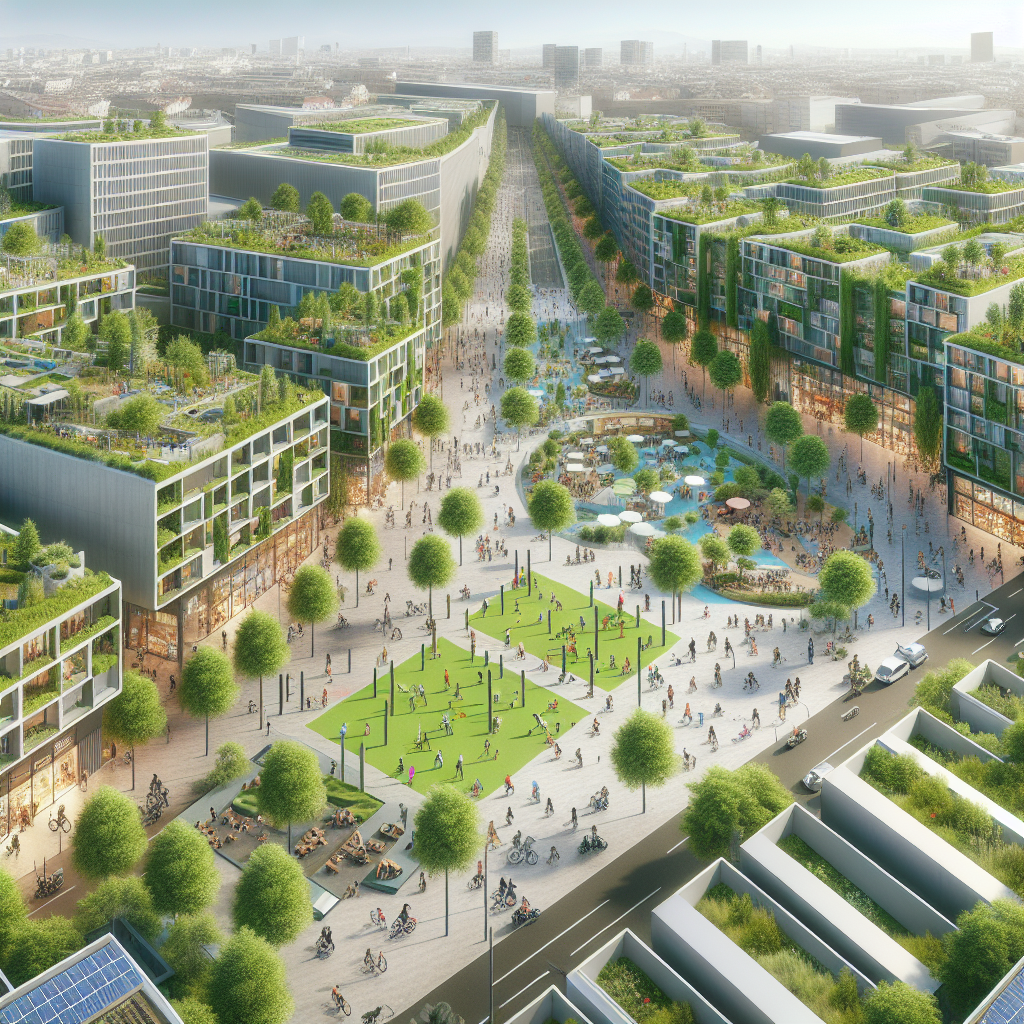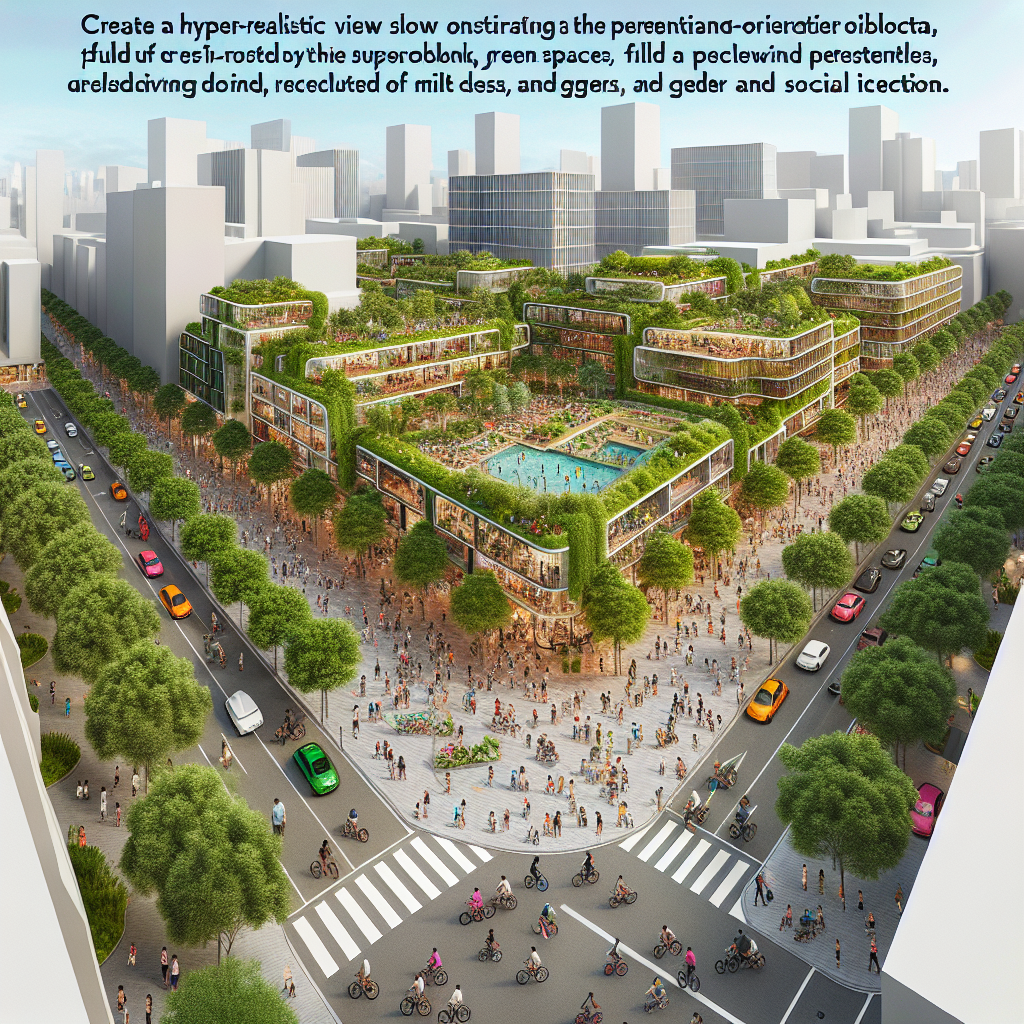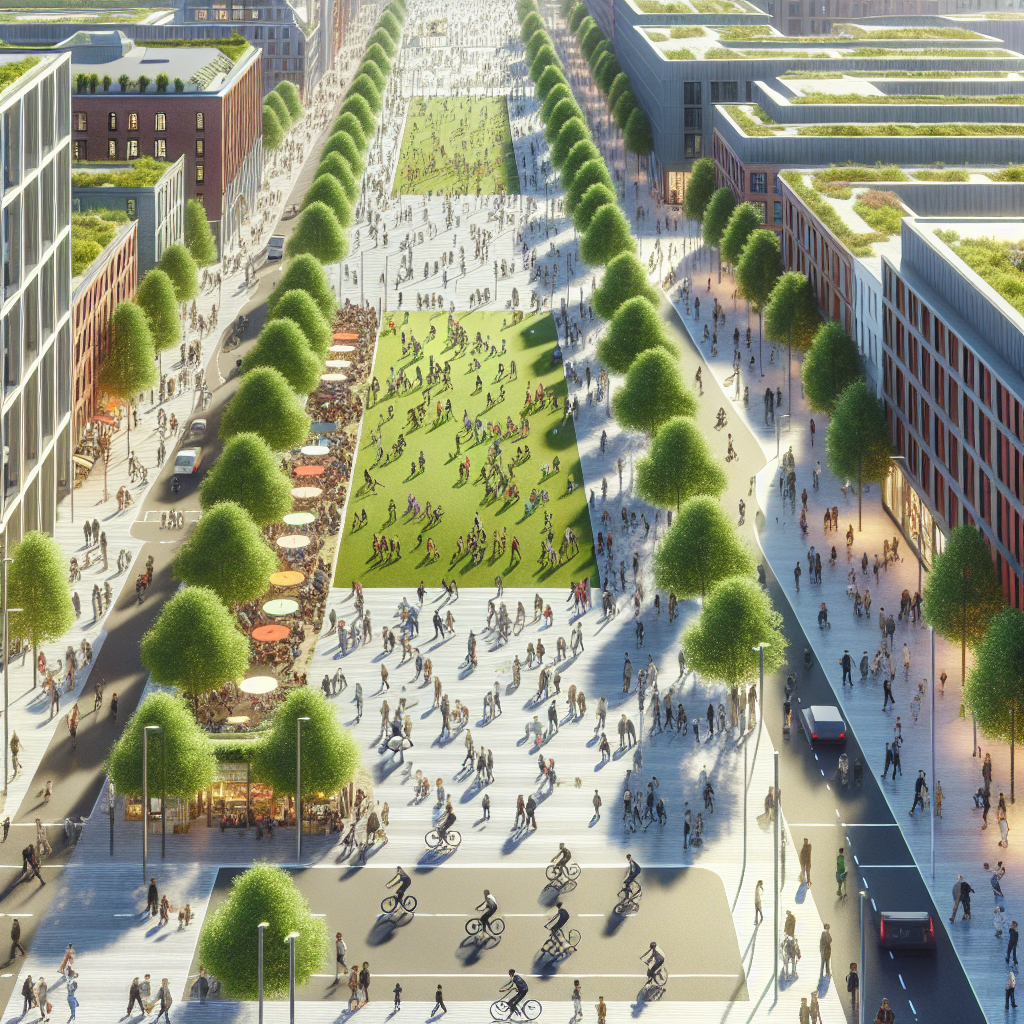Walkable Cities: Urban Design for Healthier, Sustainable Communities

Walkable Cities: Urban Design for Healthier, Sustainable Communities
As urban populations swell and cities become denser, architects and urban planners face an unprecedented challenge: creating environments that not only accommodate growth but actively enhance the quality of life. At the heart of this endeavor lies the concept of walkable cities, an urban design philosophy that prioritizes pedestrian-friendly spaces, sustainable living, and community well-being. From Barcelona’s vibrant superblocks to Tokyo’s bustling pedestrian streets, the global shift toward walkability is reshaping our cities into healthier, more sustainable, and more human-centric spaces.
The Rise of Walkability: A Paradigm Shift in Urban Design
Walkability is more than a trend; it’s a fundamental rethinking of urban design that places people, rather than vehicles, at the core of city planning. Historically, cities were naturally walkable, with compact neighborhoods and interconnected streets designed for pedestrians. However, the rise of automobile-centric planning in the 20th century drastically altered urban landscapes, leading to sprawling suburbs, congested highways, and fragmented communities.
Today, as we grapple with climate change, pollution, and public health crises, the pendulum is swinging back toward pedestrian-oriented design. Cities worldwide are embracing walkability as a key strategy to foster healthier lifestyles, reduce carbon footprints, and build stronger communities. According to a recent study by the World Health Organization, cities designed for pedestrians not only reduce obesity and chronic diseases but also significantly improve mental health and social cohesion.
Designing for People: Architectural Elements of Walkable Cities
Creating a truly walkable city requires meticulous attention to architectural details and urban planning principles. At its core, walkability hinges on four key elements: density, diversity, design, and destination accessibility.
Density ensures that amenities and services are within comfortable walking distances, typically within a 10-15 minute radius. This encourages residents to choose walking over driving for daily errands. Diversity refers to mixed-use developments, blending residential, commercial, and recreational spaces to create vibrant, engaging neighborhoods. Design emphasizes pedestrian-friendly infrastructure, including wide sidewalks, street furniture, shade-providing trees, and visually appealing facades. Finally, destination accessibility ensures that essential services, parks, and public transport hubs are conveniently located.
Take, for instance, the elegant boulevards of Paris, meticulously designed with wide, tree-lined sidewalks, charming cafes, and inviting storefronts. Similarly, Copenhagen’s pedestrian-only Strøget street, with its vibrant atmosphere and seamless integration of retail, dining, and public spaces, exemplifies the essence of walkable urban design.
Barcelona’s Superblocks: A Case Study in Walkable Urbanism
Barcelona’s pioneering “superblocks” initiative stands as a remarkable example of transformative urban design. The city has reimagined its dense grid of streets into clusters of nine city blocks, restricting vehicle traffic within these zones and prioritizing pedestrian and cyclist mobility. The result is a network of calm, green spaces that foster community interaction, reduce air pollution, and encourage active lifestyles.
Architecturally, these superblocks incorporate lush greenery, innovative street furniture, and public art installations, creating inviting communal spaces. The initiative has not only revitalized neighborhoods but also significantly reduced vehicle emissions, contributing to Barcelona’s ambitious goal of becoming carbon-neutral by 2050. This visionary approach highlights how thoughtful urban design can profoundly impact public health, sustainability, and community well-being.
Health and Sustainability: The Benefits of Walkable Urban Design
The benefits of walkable cities extend far beyond aesthetics. According to recent data from the Centers for Disease Control and Prevention (CDC), residents of walkable neighborhoods are significantly more active, reducing their risk of obesity, diabetes, and cardiovascular diseases. Furthermore, pedestrian-friendly cities experience lower rates of air pollution, contributing to improved respiratory health and overall quality of life.
From an environmental perspective, walkability is integral to achieving sustainable urban development. Cities designed for pedestrians reduce dependency on automobiles, lowering greenhouse gas emissions and mitigating climate change impacts. Initiatives such as net-zero energy buildings and green roofs further complement walkable urban design, creating holistic, sustainable urban ecosystems.
Technology and Innovation: Enhancing Walkability Through Smart Design
Advancements in technology and innovation are playing a pivotal role in shaping walkable cities. Smart urban design integrates technologies such as IoT sensors, AI-driven traffic management systems, and augmented reality to enhance pedestrian experiences. For example, cities like Singapore and Amsterdam are leveraging smart technology to optimize pedestrian flow, improve safety, and create engaging public spaces.
Moreover, emerging trends like vertical farming and urban agriculture are seamlessly integrated into walkable neighborhoods, providing residents with fresh, locally grown produce while reducing food transportation emissions. These innovations not only enhance sustainability but also enrich the urban experience, making cities more livable and resilient.
Challenges and Future Directions: Navigating the Path to Walkability
Despite its numerous benefits, implementing walkable urban design is not without challenges. Retrofitting existing automobile-centric cities requires significant investment, political will, and community engagement. Additionally, balancing density with affordability remains a critical concern, as highly walkable neighborhoods often experience rising property values and gentrification pressures.
To address these challenges, architects and planners must adopt inclusive, community-driven approaches, ensuring that walkable urbanism benefits all residents. Initiatives such as affordable housing developments, adaptive reuse of existing structures, and participatory design processes are essential to creating equitable, walkable communities.
Cities like Melbourne and Portland are leading the way, demonstrating how thoughtful urban planning and innovative architectural solutions can overcome these hurdles. By prioritizing pedestrian-friendly infrastructure, mixed-use developments, and sustainable practices, these cities offer valuable insights into the future of urban living.
Conclusion: A Walkable Future Awaits
As urban populations continue to grow, the importance of walkable cities cannot be overstated. By embracing pedestrian-oriented design, architects and urban planners have the opportunity to create healthier, more sustainable, and more vibrant communities. From Barcelona’s superblocks to Copenhagen’s pedestrian streets, the global shift toward walkability is transforming urban landscapes, offering a compelling vision for the future of cities.
Ultimately, walkable urban design represents a profound commitment to human-centric living, sustainability, and community well-being. As we navigate the complexities of urban growth, the path forward is clear: designing cities for people, not cars, is not only desirable but essential for a healthier, more sustainable future.








